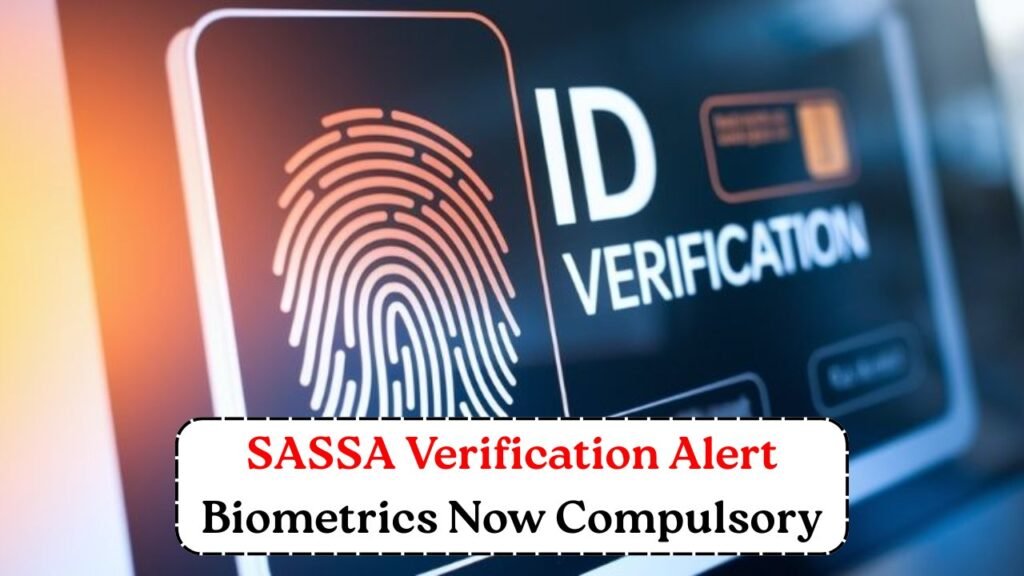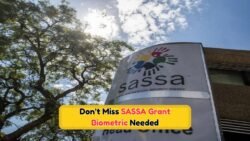SASSA Biometric Verification 2025: The South African Social Security Agency (SASSA) is ushering in a new era of security and efficiency with its biometric verification system, slated for full implementation by 2025. This innovative step aims to enhance the safety of social grant payments, ensuring that the right beneficiaries receive their due benefits without any hitches. The system promises to leverage advanced fingerprint and facial recognition technology, making it nearly impossible for fraudulent claims to slip through. As the deadline approaches, beneficiaries are encouraged to familiarize themselves with the new system to avoid any disruptions to their payment schedules. This proactive step is crucial to maintaining the integrity of the social security framework in South Africa.

Understanding SASSA Biometric Verification
The SASSA Biometric Verification 2025 initiative is more than just a technological upgrade; it represents a significant shift in how social grants are managed across South Africa. Biometric verification involves using unique physical characteristics, such as fingerprints and facial features, to confirm a beneficiary’s identity. This method is considered one of the most secure forms of identification, reducing the risk of identity theft and fraudulent claims. The implementation of this system is particularly important in a country where social grants are a lifeline for millions. In recent years, there have been numerous reports of fraud within the system, where unscrupulous individuals exploit loopholes to claim grants illegitimately. By 2025, all SASSA beneficiaries will need to undergo biometric verification to continue receiving their payments. The verification process is designed to be straightforward, with beneficiaries required to visit designated centers equipped with biometric scanners. It is crucial for beneficiaries to comply with these requirements to ensure uninterrupted access to their grants.
Why SASSA Biometric Verification 2025 is Essential
The importance of the SASSA Biometric Verification 2025 cannot be overstated. In a nation where social grants serve as a critical safety net for vulnerable populations, ensuring that these resources reach the intended recipients is paramount. The biometric system aims to eliminate fraudulent activities that have long plagued the social grant system. These fraudulent claims not only divert resources away from those in need but also undermine public trust in the system. By using biometric data, SASSA can ensure that only legitimate beneficiaries receive payments. This move is also expected to streamline the administrative process, reducing the time and resources spent on verifying identities manually. With the growing number of beneficiaries, an efficient system is essential to manage the burgeoning demand effectively. Furthermore, the introduction of biometric verification aligns with global trends towards digitization and enhanced security measures in social welfare systems.
Preparing for SASSA Biometric Verification in 2025
As 2025 approaches, beneficiaries must prepare for the SASSA Biometric Verification process to ensure seamless access to their grants. The first step is to stay informed about the verification process and timelines through official SASSA communications. Beneficiaries should also ensure that their contact information is up to date with SASSA to receive timely notifications about verification appointments. It is advisable to visit SASSA offices early to avoid last-minute rushes, which can lead to long queues and potential delays. Additionally, beneficiaries should be prepared to provide the necessary documentation, such as identification documents, to facilitate the verification process. Community outreach programs and workshops are expected to play a significant role in educating beneficiaries about the new system, offering guidance on how to navigate the process smoothly.
What Happens if You Miss SASSA Biometric Verification?
Missing the SASSA Biometric Verification deadline in 2025 could have serious repercussions for beneficiaries. Failure to comply with the verification requirements could result in the suspension or termination of social grant payments. To prevent this, beneficiaries must be proactive in completing their biometric verification on time. In cases where beneficiaries are unable to visit verification centers due to health or mobility issues, SASSA is expected to provide alternative arrangements, such as mobile verification units. It’s crucial for beneficiaries to communicate any challenges they may face to SASSA representatives to explore possible solutions. Missing the verification process not only affects the individual but can also impact entire families who rely on these grants for their day-to-day sustenance. Therefore, timely action and adherence to guidelines are essential to securing continued support.




